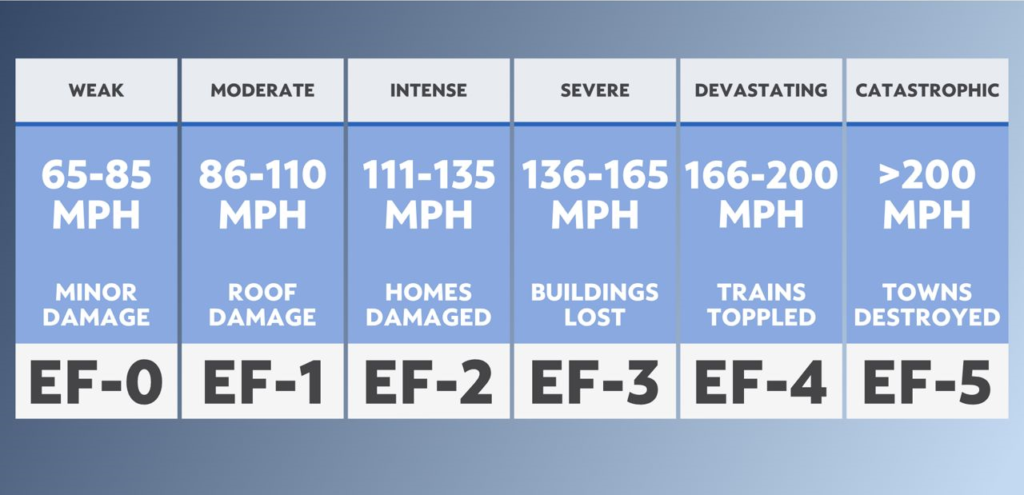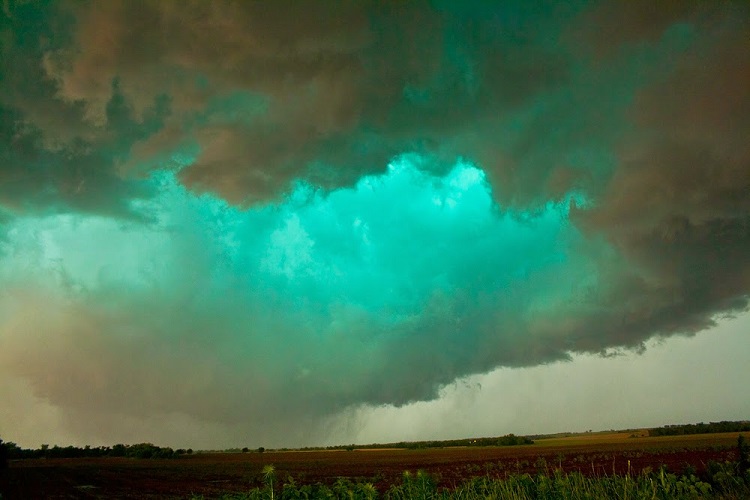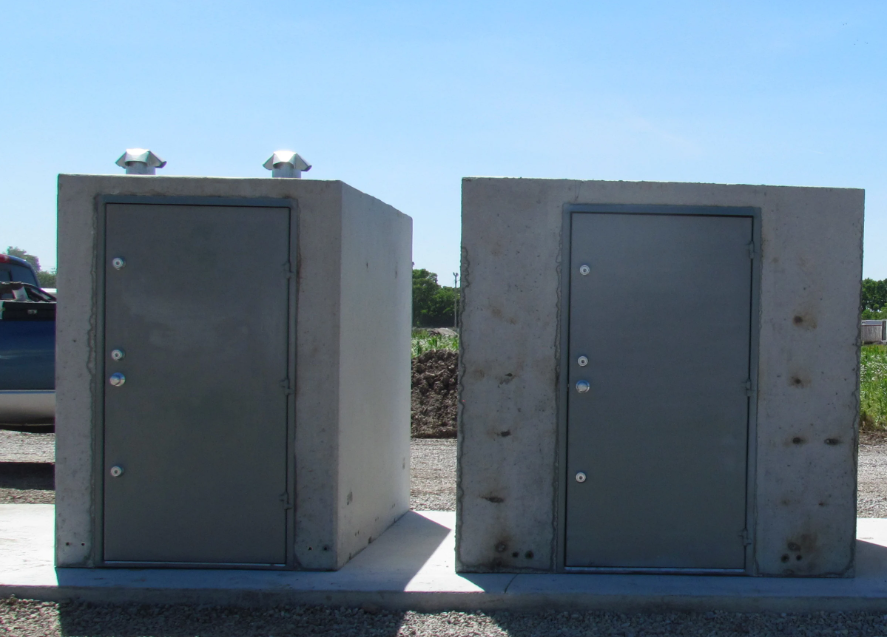Back in 2011, an EF-3 tornado hit Naperville, IL. It was the most damaging tornado in 110 years.
While tornadoes of this scale haven’t happened very often in Naperville, data shows that Naperville has a higher tornado index than Illinois (and the U.S. overall).
This means that the potential for tornadoes is higher in this city –and that you would be smart to be prepared.
In this article, we’re going to cover:
- How many tornadoes have been recorded in Naperville, IL
- The last time a tornado came to Naperville and what the resulting damage was
- Tell-tale signs that a tornado is coming
- Everything you need to know about insurance in Naperville, IL.
Let’s get into it!
How Many Tornadoes Have Hit Naperville, IL?

There have been four registered (and one unregistered) large-scale tornadoes in Naperville, IL since 1911.
Prior to 2007, tornadoes were measured by the Fujita Scale (the F Scale). This has since been upgraded to the Enhanced Fujita Scale (the EF Scale).
While the F Scale was based on the intensity of damage, the EF Scale takes into account wind speed and 28 different “damage indicators”.
1911
On November 11, 1911, an F-2 tornado blew into Naperville (along with intense heat and blizzard-like conditions).
A farm, two windmills, and three farm buildings and shacks were destroyed or damaged, and several cattle were killed.
1913
On March 24, 1913 a tornado in Naperville destroyed the Naperville Lounge Co., and damaged Tom’s Feed Store, the First Evangelical Church, and another building close to the YMCA.
In addition, several farms, barns, windmills, houses, and other structures were also damaged, and several cattle were killed.
Interestingly, despite the extensive damage, the National Weather Service did not list this tornado as “significant”.
1971
On August 24, 1971, an F-2 tornado blew into town again, damaging six houses and injuring one person.
1976
On March 12, 1976, an F-3 tornado passed through Naperville, damaging the Naperville Racquet Club. Luckily, no one was injured.
2021
On June 20, 2021, an EF-3 tornado blew through Naperville, with wind speeds measuring in excess of 140 mph.
2023
NCTV17.org reported a brief tornado touchdown in Naperville. Bother were classified as EF-0 tornadoes that didn’t cause any major issues. Both were on the ground for just a couple of minutes.
Nation Wide Tornado Statistics
According to data from National Oceanic and Atmospheric Administration (NOAA) the number of tornadoes is growing decade over decade.
| DECADE | NUMBER OF TORNADOES |
| 1950s | 2,897 |
| 1960s | 3,365 |
| 1970s | 5,747 |
| 1980s | 8,035 |
| 1990s | 10,781 |
| 2000s | 12,174 |
| 2010s | 11,431 |
| 2020s | 1,810 (up to Jan 2022) |
While the number of reported tornadoes has increased somewhat over the past few decades, this may be due to improvements in technology and increased population density rather than an actual increase in the number of tornadoes. In the past, many tornadoes have been missed or unreported to the authorities.
However, it is true that some studies suggest that climate change could have an impact on tornado activity in the future. Warmer temperatures and changes in atmospheric conditions could lead to an increase in severe weather events, including tornadoes.
When Was The Last Time a Tornado Hit Naperville and How Much Damage Did it Cause?
June 20, 2021, was the last time a tornado came through Naperville, touching down near Ranchview Drive just south of 75th Street.
It measured EF-3 and destroyed one house completely while damaging or preventing people from living in a further 150–225. In addition, multiple trees were snapped, damaged, and torn from the ground.
Luckily, there were no fatalities and only 8 were reportedly injured, despite the fact that this tornado was the most severe in 110 years.
How Do You Know When a Tornado is Coming?
- Severe thunderstorms
- Frequent thunders
- Dark sky
- Green or yellow sky
- Rumbling sounds
- Funnel cloud forming
It’s helpful to know how tornadoes are formed in order to understand the warning signs.
Tornadoes are formed when warm and humid air meets dry, cold air. As the cold air moves over the warm, it produces a thunderstorm; however, when the warm air then rises up through the cold air, it creates an upward flow.
This upward flow of air can then begin to rotate (called a mesocycle) if the winds change direction or increase their speed suddenly. As soon as a mesocycle is formed, the thunderstorm becomes known as a supercell.
As the mesocycle sucks in more of the supercell’s warm air, it increases its speed and the present water droplets begin to form a funnel cloud.
When the funnel eventually descends down to the ground, it then becomes a tornado.
While tornadoes can appear to come from out of the blue, there are warning signs that you should be aware of. That way you can be fully prepared!
Severe Thunderstorms
Due to the way tornadoes are formed, if you have been noticing an increase in severe thunderstorms, there’s a strong possibility that they could create a tornado.
This is even more likely if the wind speeds are particularly fast, or have been changing direction suddenly.
Frequent Thunder and Lightning
According to this 2007 report, an increase in lightning could be indicative of a tornado in supercell storms. This is based on research that suggests that lightning and thunder increase around 15–20 minutes before a tornado forms.
Extremely Dark Sky
An extremely dark sky is usually an indicator of an extreme thunderstorm, which — as we’ve mentioned — could then cause a tornado.
Green or Yellow Clouds

Despite the fact that dark green or yellow clouds are an indication of a tornado, this is actually one of the more misleading signs.
A change in the color of the sky, particularly a dark green, is actually due to light refraction that occurs when hail is present.
It’s far more likely that this change in appearance will lead to a hail storm than a tornado. However, as the two have been known to go hand in hand, that explains this warning sign and it shouldn’t be dismissed entirely!
Rumbling or Whistling Sounds
If you can hear rumbling or whistling sounds, this is a surefire sign that a tornado has not only formed but is likely nearby.
The rumbling sound is caused by the wind as the tornado moves through trees and structures. Additionally, a whistling sound may occur when a tornado spins, thanks to the wind rotation within it.
If the rumbling is more of a roar, like that of a freight train approaching, then this should be taken very seriously and you should get to a below-ground tornado shelter immediately.
A Funnel Cloud at the Thundercloud Base
If you can see a funnel cloud at the base of the thundercloud, this is what will form a tornado. As it continues to grow, it will eventually touch the ground – becoming a tornado.
If you can see this, be prepared to take action. While not all funnel clouds will become tornadoes, you should still be wary.
Who is Issuing Tornado Alerts in Naperville?
Any tornado alerts or weather warnings in Naperville will be issued by the National Weather Service.
It’s a good idea to follow the Chicago National Weather Service Twitter account, as any tornado alerts will be issued in real-time through it.
How to Prepare Your Home for a Tornado

While you may not be able to predict when the next big tornado comes, it’s important to make sure that you’re prepared when and if it does:
Find a Safe Room
Nowhere will be 100% safe from a tornado, but there are definitely areas of your home that will be better than others.
If you have a basement or storm cellar, these are ideal. Otherwise, choose a room on the lowest level of your home that has no windows. This may be a bathroom or hallway, or even a closet!
Reinforce Windows and Doors
Making sure that you protect your windows and doors can ensure that you, your family, and your home are a little more protected and that damage can be minimized.
One way to do this is by installing storm shutters on your windows and doors. There are several options available, including permanent shutters which are easy to close quickly.
Clear Yard of Debris
Anything that’s in your yard could potentially become a hazard and flying missile. Make sure that you’ve cleared away any debris, such as firewood, building materials, or branches.
Additionally, trimming your trees (or hiring an arborist to do so for you) is a good idea, as any weak or overgrown tree limbs could snap off in a tornado.
Secure Heavy Furniture
If a tornado occurs, any heavy furniture could become a hazard. The best way to deal with this is by moving or securing it so that it can’t become dangerous.
Anything outside, such as patio furniture, trash cans, or an outdoor grill, should be brought inside if there are any heavy-storm warnings.
Install Tornado Shelter

Storm shelters are essentially safe rooms that have been reinforced and designed to protect you and your family, even if the rest of the house is destroyed.
If you don’t have a basement or below-ground safe room to shelter in, then you should consider installing a tornado shelter in your home. They won’t cost a fortune to build, and FEMA has guidelines for how to build one.
Create Emergency Kit
It’s vital to create an emergency kit, as in the days following a tornado you may not have access to clean water, electricity, gas, and more.
FEMA’s partner site, Ready.gov, has a full list of recommendations for your emergency kit. However, the absolute basics you should include are:
- Water (one gallon per person per day for several days)
- Food (non-perishable and enough for several days), a manual can opener, disposable plates, cups, and cutlery
- A battery or hand-crank radio, and NOAA Weather Radio with tone alert
- A flashlight and extra batteries
- A first aid kid
- A cell phone, chargers, and backup battery
- Copies of important documents, identification, bank account records, and insurance documents (store in a waterproof, portable container, or electronically).
Practice Tornado Drills
Knowing where to go, what to do, and what to bring during a tornado is essential.
Make sure that every member of your family knows what your tornado emergency plan is, and practice taking shelter.
You may also want to make sure that every member of your household knows how to administer basic first aid, as well as use the fire extinguisher, and to turn off the water, electricity, and gas points.
Step-by-Step Guide on How to Claim Your Tornado Insurance

Contact Your Insurance Company
The first step is to contact your insurance company as soon as possible to begin the process of filing a claim. Make sure you ask if you’re covered, how long you have to file the claim, and how long it will take to process.
Be sure to also ask about Additional Living Expense Coverage, which will move you into a temporary living situation.
Remember, most homeowner’s insurances cover tornado damages.
Document Damage with Photos
It’s incredibly important to take extensive photos of the damage to your property, or what you’d like to claim. This is to prove your circumstances to your insurer.
Make a List of Damaged Items
This is essential for making a claim. Prepare beforehand by having a home inventory, so that you can easily compare and make your damaged items list.
Gather Insurance Documents
Making sure that you have all of these documents together in one place will make it easier for you to go through the claims process. Keep a copy in your emergency kit.
Wait for an Adjuster
An adjuster will have to come and inspect your property before you can move forward on your claim. Be ready to show them structural damage and give them your list of damaged items.
Review the Settlement Offer
When the settlement offer comes through, look over it carefully. If you’ve gotten quotes from a trusted contractor beforehand, you can decide whether or not this is reasonable.
Negotiate if Necessary
If the settlement offer isn’t adequate, find out what the procedure for contesting is and talk to your insurer.
The Illinois Department of Insurance may also be able to help, so get in touch with them if you feel that you’re not getting all of the compensation you’re entitled to!
